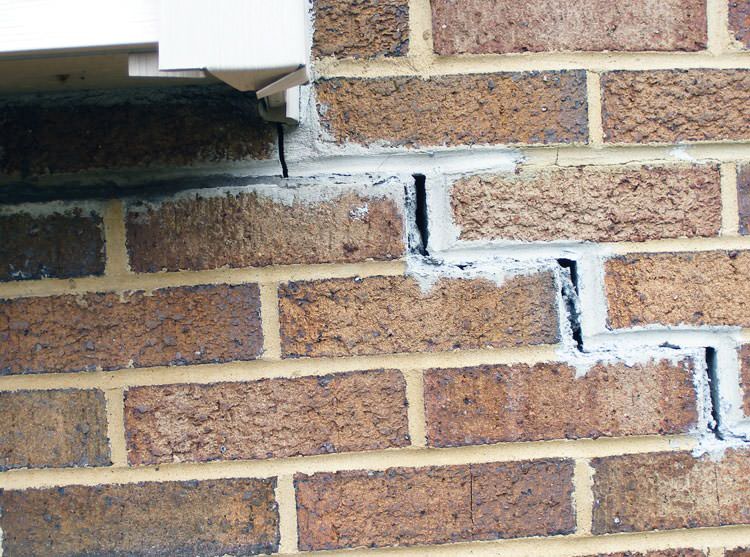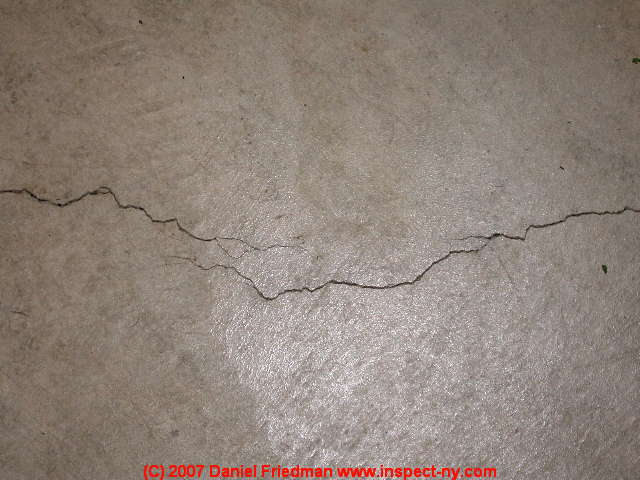Table of Content
- Services
- How Much Does It Cost To Fix A Cracked Foundation?
- How Big Is the Crack, Both Vertically and Horizontally?
- Is the Crack an Indication of Other Foundation Problems?
- Warning signs that there may be a foundation problem
- Horizontal cracks are more likely to indicate trouble than diagonal and vertical foundation cracks.
- How to Evaluate Major Concrete Slab Cracks
Soil composition, water damage, inferior construction, earthquakes, and possible infestation of mold or termites could cause foundation issues. Even the slightest of quivers could be an issue as it intensifies the cracks are already present in the building. Damages to your foundation could result in large, jagged, or diagonal cracks, often more than a quarter-inch. Such issues need to be addressed as soon as possible to preserve the structural integrity and value of your home. If you’re searching for “cracks in foundation when to worry,” you’re not alone.

Drive had no cracks and drive to road transition was good. The plumbing and gas lines come into the home in the area of the ceramic tile crack in the closet. One of the big problems on a conditions like these is was it a previous problem or ongoing.
Services
In most cases, settlement cracks in the foundation are merely aesthetic in nature and cannot harm your house in any way whatsoever. As we said at the start of this article, if you Googled “cracks in foundation when to worry,” you’re not alone. The best way to set your mind at ease is to contact an experienced foundation repair contractor for an inspection and estimate. (Most contractors will do an inspection for free.) They’ll be able to tell you if the cracks are structural or non-structural and your repair options. There are several variables, so ultimately the best people to ask is usually the company you are planning to hire. The factors which affect the cost of repair are many and varied, but some things you will inevitably have to pay for are a structural engineer, a geotechnical engineer, and a building permit.

If a load bearing wall is removed, there are structural issues and risks that homeowners and buyers should be aware of. Look for a concentration of issues and are they located in just one area of the home, such as the living room or the back half of the house. In cold climates where the ground freezes a foundation may be subject to damage if the frost / freezing gets below the depth of the foundation or basement walls. Foundations not properly sized and engineered for the type of soils and the loads that the foundation is carrying will create cracks.
How Much Does It Cost To Fix A Cracked Foundation?
A long diagonal crack may indicate foundation settlement or uplift, especially if the crack is wider on one end. Most cracks in nonstructural concrete slabs are caused by failure to follow one or more of the proper procedures. For example, the concrete finishers may add too much water to the concrete mix to make it more malleable. They may also need to rehydrate concrete after exposure to prolonged heat.

These can be linear when occurring along a rebar and are usually caused by poor joint construction or rusting rebars inside the concrete. Rust is expansive and can thus create pressure that causes damage to the slab. The presence of moisture exacerbates the corrosion, and this worsens if the spalling is severe enough to expose the metal.
How Big Is the Crack, Both Vertically and Horizontally?
If a foundation settles, cracking may occur, especially if there is differential settlement. This epoxy, however, isn’t exactly the same as the handy two-part epoxy used for crafts and other household repairs. This epoxy is delivered as a pressurized injection and usually comes with injection ports like this one from PC Products to make it easy to deliver the epoxy into the crack. First, the crack is cleaned, dried, and then blown with compressed air to make sure it’s free of any debris.

This pressure will cause the foundation walls to bow inward. 98% of the homes in the United States have foundations constructed out of concrete, masonry blocks or brick, all of which tend to crack when there is movement and excessive stress. In areas with expansive soils there is usually more soil and foundation movement than in other areas.
Soil that wasn’t adequately compacted before construction.If soil isn’t compacted before construction begins, the heavy structure built on top will sink into the ground unevenly. This category includes any use of substandard incompatible materials or a badly planned process of pouring out the slab foundation. Mixed brands or strengths of cement, incorrect cement-aggregate ratios, uneven curing or reinforcement of the concrete, all contribute to the appearance of cracks. Some soils have a large capacity to absorb moisture and are heavily affected by it.

I ask because of the discoloring an possible grind marks. With possibly a slight concern in this area I probably not be worried because the rebar or steel mesh will keep it from moving and all concrete slabs will crack over time. Foundation walls are reinforced with steel to keep them from moving. In areas with clay soil, the clay can swell when it becomes wet and put intense lateral pressure on the wall, pushing it inward and leading to structural cracks that may indicate bigger issues. This is a major problem, and a foundation contractor should be consulted. The NAHB standard for cracks in foundation walls requires repairing cracks that exceed one-quarter-inch wide.
The very top will shrink the most because it has the least resistance, while the very bottom will shrink the least because the mesh is there. (This is what creates cracks on the surface.) We use rebar , install it in the middle of the slab, and we don’t EVER have cracks. @JimStewart The slab could be fiber reinforced, but it still must be installed with good building practices. We install slabs without mesh but we recognize good practices by decreasing the spacing of control joints, protect the vapor barrier, etc. The seams between drywall panels are often filled with drywall mud before they are covered with paper tape.
The soil upon which the foundation slab is to be placed must be compacted as much as possible. In case the soil is itself unsuitable, crushed rock or gravel should be used to stabilize the foundation and ensure that moisture doesn’t cause any of the soil-related problems listed above. If this is not done, or if the soil is not properly compacted, the slab will likely become unstable over time.
When we talk about structural foundation cracks, we’re talking about cracks in poured concrete walls and concrete block foundation walls. Cracks that are only in the drywall or plaster don’t threaten a building’s structural integrity. Differential settlement is the cause of most structural foundation cracks.


No comments:
Post a Comment